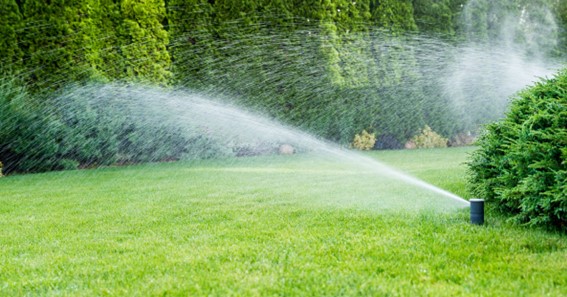Are you curious to know what is water grass? You have come to the right place as I am going to tell you everything about water grass in a very simple explanation. Without further discussion let’s begin to know what is water grass?
When we think of grass, we often envision lush green lawns or fields. However, there is a fascinating world of grass-like plants that thrive in aquatic environments, known as water grass. These plants play a vital role in maintaining the health and balance of aquatic ecosystems while adding beauty and charm to ponds, lakes, and aquariums. In this blog, we will explore the wonders of water grass, shedding light on its characteristics, benefits, and how it enhances aquatic environments.
What Is Water Grass?
Water grass, also known as aquatic grass or underwater grass, refers to a diverse group of grass-like plants that grow fully or partially submerged in water. They belong to various plant families and come in different shapes, sizes, and textures. Water grass species include Vallisneria, Sagittaria, Eleocharis, and many others. These plants have adapted to survive in aquatic habitats, with specialized features that enable them to thrive underwater.
The Beauty Of Water Grass:
Water grasses add a unique aesthetic appeal to aquatic environments. Their graceful, slender stems and foliage sway gently with the water currents, creating a mesmerizing and tranquil atmosphere. Some water grasses produce delicate flowers or seed heads that add bursts of color and texture to the underwater landscape. Whether in natural bodies of water or aquariums, water grasses create a visually captivating and serene environment.
Ecological Importance:
Water grasses serve several essential ecological functions in aquatic ecosystems:
- Oxygenation: Through photosynthesis, water grasses release oxygen into the water, enhancing water quality and supporting the health of aquatic organisms.
- Habitat and Nursery Areas: Water grasses provide shelter and breeding grounds for a variety of aquatic species, including fish, amphibians, and invertebrates. The dense foliage of water grasses offers protection, spawning sites, and refuge for young organisms.
- Filtration and Nutrient Uptake: Water grasses play a crucial role in maintaining water clarity by filtering out sediments and absorbing excess nutrients, such as nitrogen and phosphorus. This helps prevent algal blooms and maintains a healthy balance in aquatic ecosystems.
Benefits For Aquariums:
Water grasses are popular choices for aquatic plant enthusiasts due to their unique qualities and benefits in aquariums:
- Natural Habitat Replication: Water grasses create a more natural and aesthetically pleasing environment in aquariums, resembling the habitats of fish and other aquatic species.
- Oxygenation and Water Quality: Similar to their role in natural ecosystems, water grasses in aquariums contribute to oxygenation and water quality improvement by absorbing carbon dioxide and releasing oxygen.
- Algae Control: The dense growth of water grasses helps inhibit excessive algae growth by competing for nutrients and blocking out light, providing a natural method of algae control.
Care And Maintenance:
Caring for water grasses in aquariums or ponds requires attention to specific requirements:
- Lighting: Adequate lighting is crucial for the growth of water grasses. Aquariums may require special aquatic plant lights to ensure optimal photosynthesis and growth.
- Nutrients: Water grasses benefit from a nutrient-rich substrate or regular addition of aquatic plant fertilizers to promote healthy growth.
- Water Conditions: Monitoring and maintaining proper water parameters, such as temperature, pH, and water hardness, are important for the well-being of water grasses.
Conclusion:
Water grasses bring a touch of natural beauty and ecological significance to aquatic environments. With their graceful appearance, oxygenating properties, and role in creating habitats, water grasses contribute to the health and balance of aquatic ecosystems. Whether in natural bodies of water or aquariums, these fascinating plants enhance the visual appeal, provide shelter for aquatic organisms, and play a vital role in maintaining water quality. Exploring the world of water grasses opens up a new dimension of appreciation for the wonders of aquatic ecosystems.
Let’s find out more facts about interesting topics on Turnonx
FAQ
What Is Known As Water Grass?
Two common lawn weeds that are sometimes referred to as “water grass” are crabgrass and yellow nutsedge. Crabgrass (Digitaria spp.) is an annual, warm-season grass. Crabgrass seeds begin to germinate when soil temperatures reach 60 degrees Fahrenheit.
How Do I Get Rid Of Watergrass In My Lawn?
Effective herbicides include Basagran (bentazon), Dismiss (sulfentrazone), and Certainty (sulfosulfuron). These materials are generally not available to home gardeners. However, they can be applied by professional lawn care companies.
Is Water Grass The Same As Nutsedge?
As a homeowner with a maintained lawn, you may have heard of something called Nutsedge. Sometimes referred to as “sedgegrass,” “nutgrass,” or “watergrass,” this undesirable plant that tends to grow in wet areas is troublesome to many home lawns.
Can You Pull Water Grass?
Nutsedge is easily identified by its triangular shaped blades that are often described as lime green or bright green. The root system of nutsedge consist of multiple fibers called rhizomes and produces tubulars. Each tuber has the capability to produce a new plant, which is why it is critical that it is never pulled.
I Have Covered All The Following Queries And Topics In The Above Article
What Is The Best Time To Water Grass
What Is Water Grass
What Temperature Is Too Cold To Water Grass
What Is The Best Time To Water Your Grass
What Is The Best Time Of Day To Water Grass
What Temperature Is Too Cold To Water Grass Seed
What Time Of Day Is Best To Water Grass
What Is The Best Time To Water The Grass
Water Grass Hay
Water Grass Vs Crabgrass
What Kills Water Grass
Water Grass Killer
Water Grass Name
Water Grass Leaves
What Is Water Grass
What is the meaning of water grass
What is called water grass
